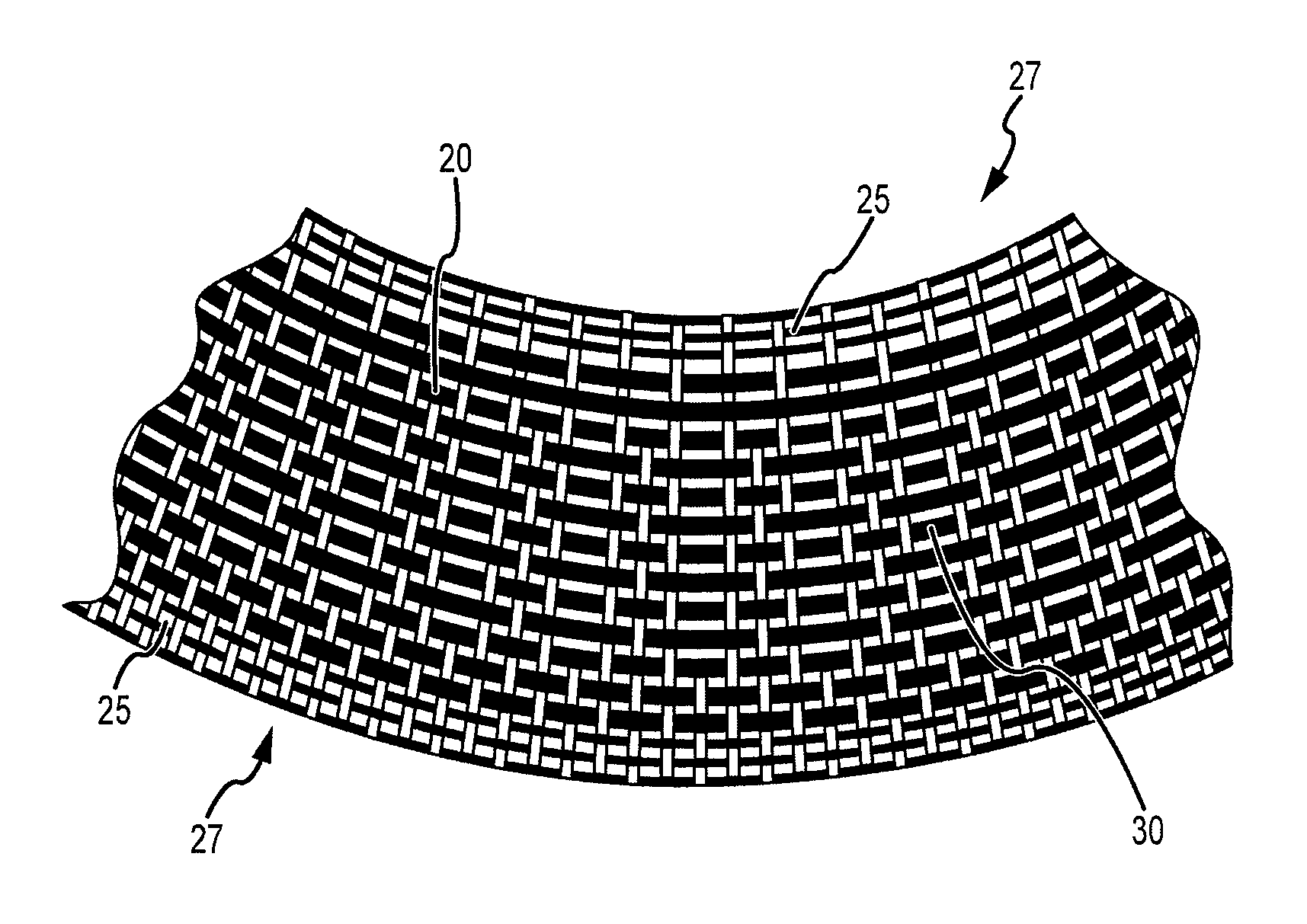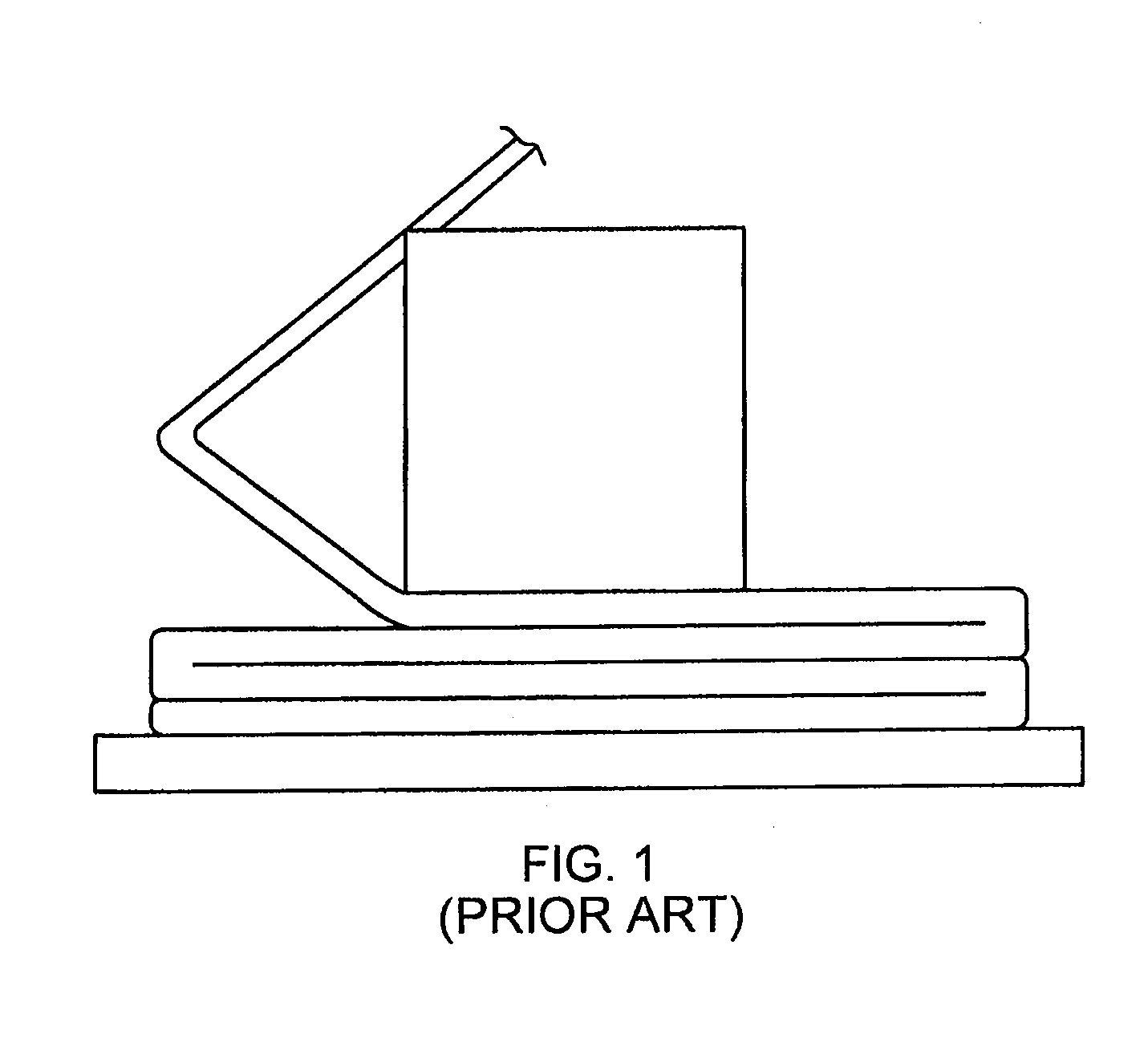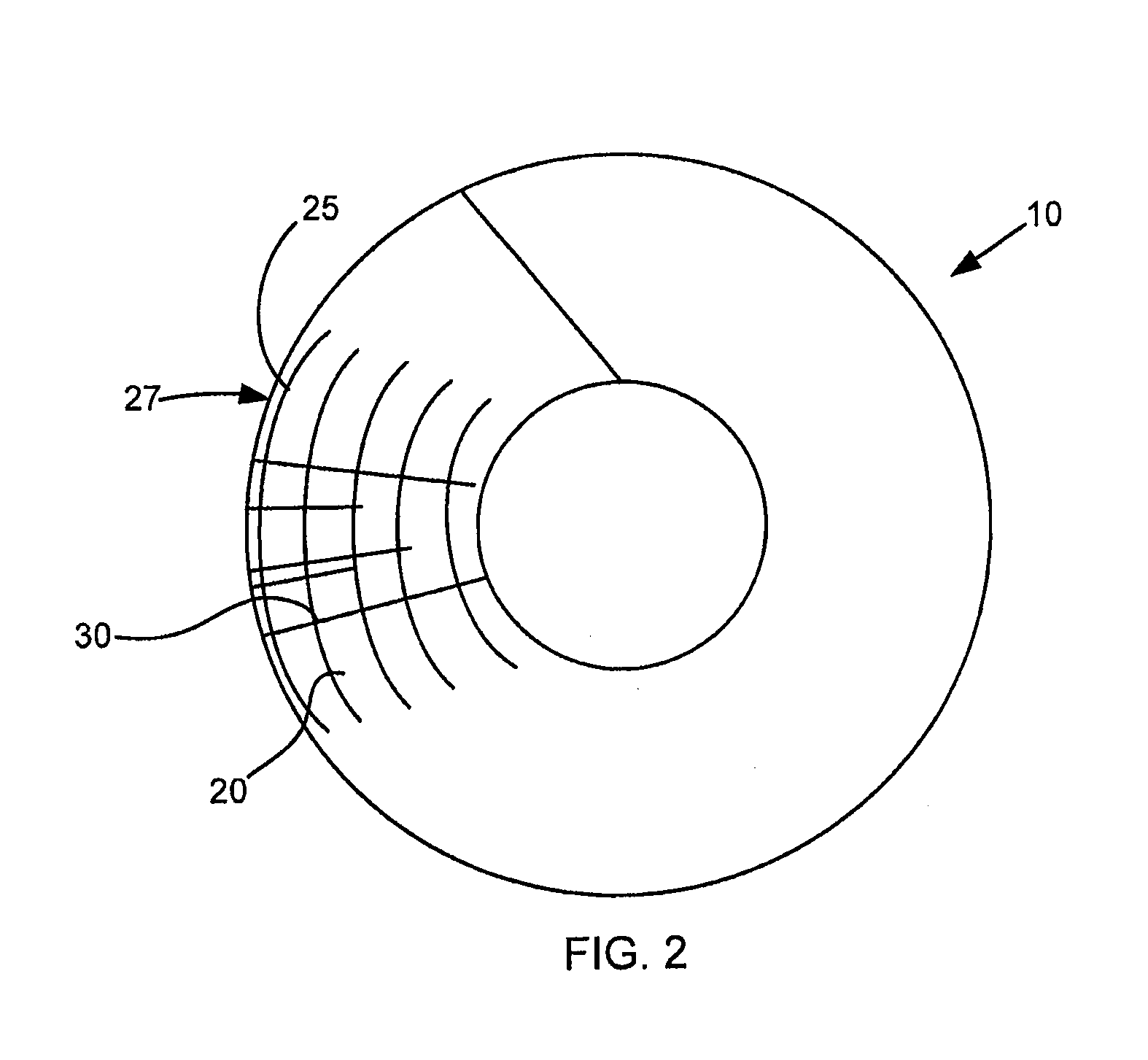System and method for textile positioning
a technology for positioning and textiles, applied in the field of positioning and securing textiles, can solve the problems of reducing efficiency, reducing output, and inefficiency of the manufacturing process of prior art looms and other apparatuses for manufacturing circular preforms, and achieve the effect of increasing fiber volum
- Summary
- Abstract
- Description
- Claims
- Application Information
AI Technical Summary
Benefits of technology
Problems solved by technology
Method used
Image
Examples
Embodiment Construction
[0052]The detailed description of various embodiments herein makes reference to the accompanying drawing figures, which show various embodiments and implementations thereof by way of illustration and its best mode, and not of limitation. While these embodiments are described in sufficient detail to enable those skilled in the art to practice the embodiments, it should be understood that other embodiments may be realized and that logical, electrical, and mechanical changes may be made without departing from the spirit and scope of the invention. Furthermore, any reference to singular includes plural embodiments, and any reference to more than one component or step may include a singular embodiment or step.
[0053]Also, any reference to attached, fixed, connected or the like may include permanent, removable, temporary, partial, full and / or any other possible attachment option. Additionally, any reference to without contact (or similar phrases) may also include reduced contact or minimal...
PUM
| Property | Measurement | Unit |
|---|---|---|
| Diameter | aaaaa | aaaaa |
| Diameter | aaaaa | aaaaa |
| Diameter | aaaaa | aaaaa |
Abstract
Description
Claims
Application Information
 Login to View More
Login to View More - R&D
- Intellectual Property
- Life Sciences
- Materials
- Tech Scout
- Unparalleled Data Quality
- Higher Quality Content
- 60% Fewer Hallucinations
Browse by: Latest US Patents, China's latest patents, Technical Efficacy Thesaurus, Application Domain, Technology Topic, Popular Technical Reports.
© 2025 PatSnap. All rights reserved.Legal|Privacy policy|Modern Slavery Act Transparency Statement|Sitemap|About US| Contact US: help@patsnap.com



